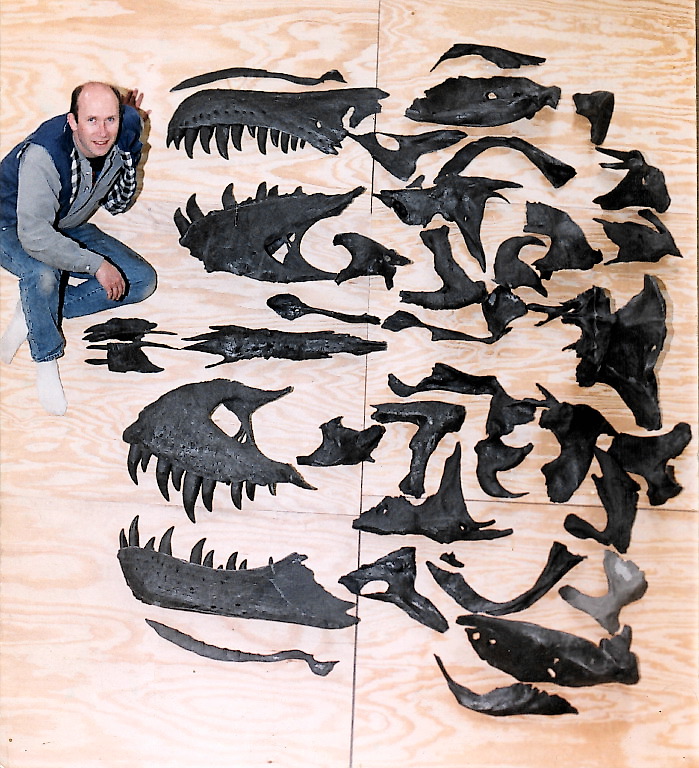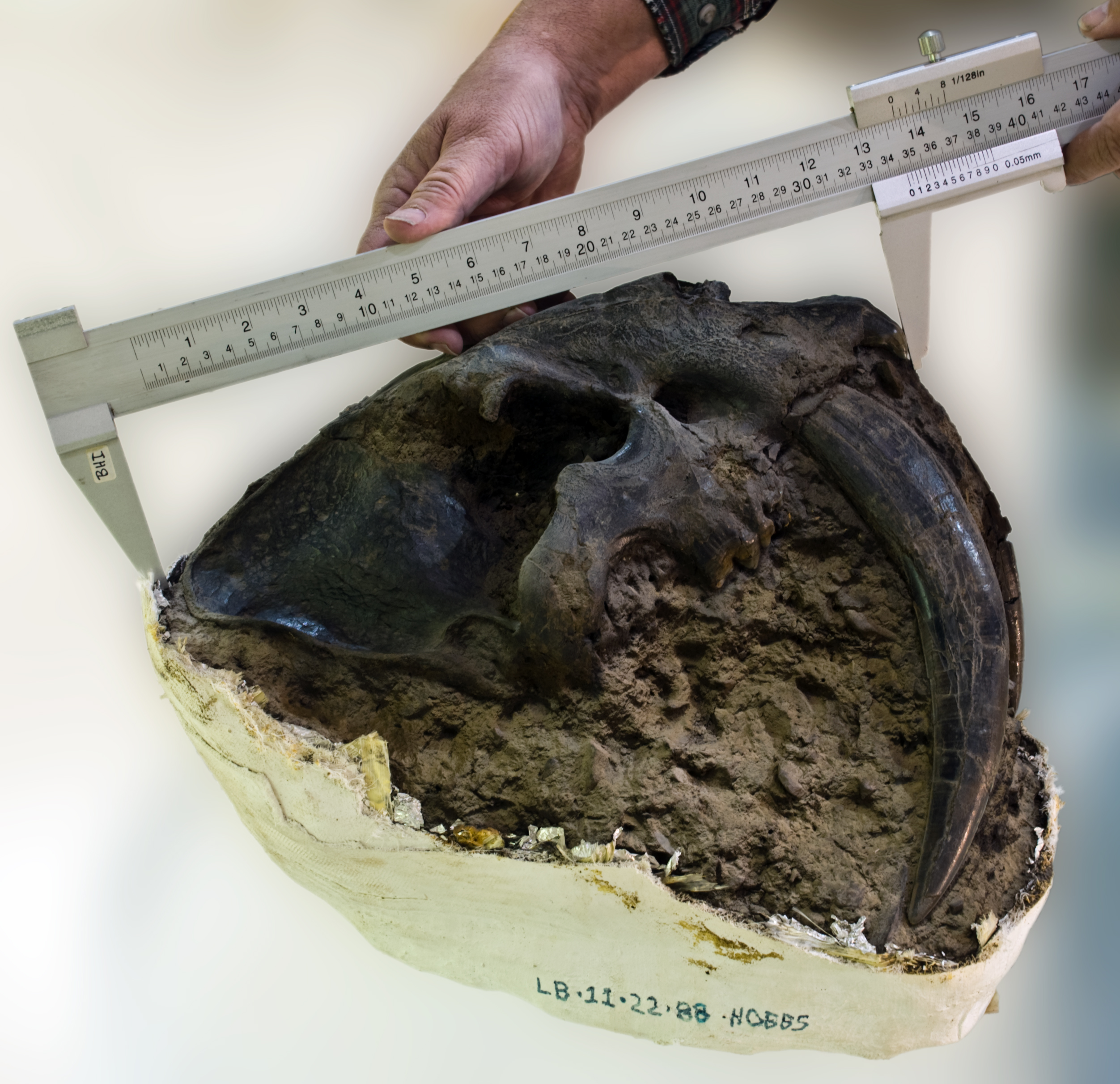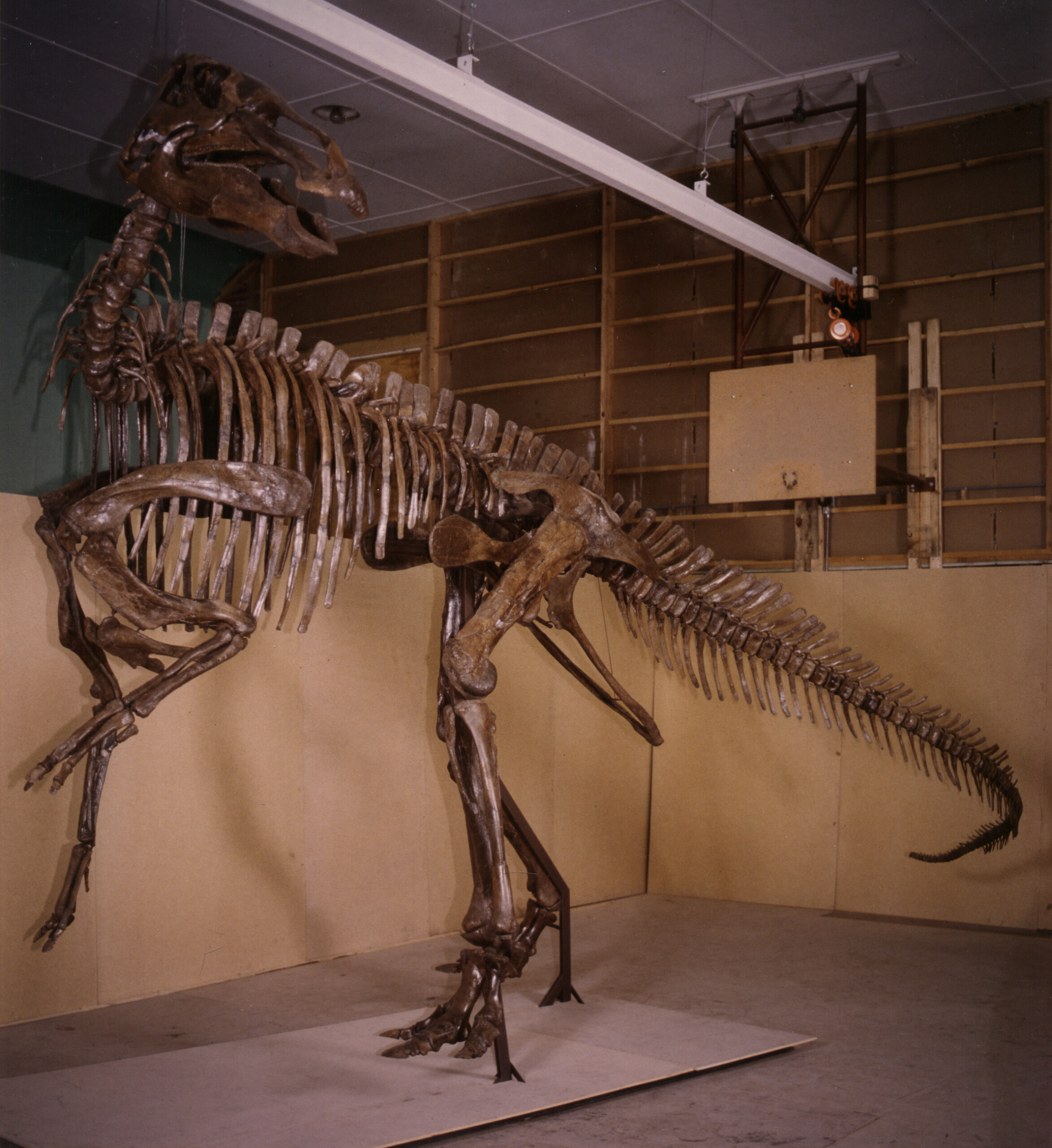Favorite CollLection Triceratops Real Figure Keyring
$11.95

Research is the most important part of all aspects of paleontology, from learning about a dig’s geologic characteristics, to the final preparation, description and reporting of a fossil.
We research the geology of a locality and the ownership of the land (private or public). We cannot collect on public lands, and must seek permission from landowners of private land before even looking for fossils.
Before any expeditions are undertaken for collection purposes, we research the geology of a locality and the ownership (private, state, or federal) of the land. It is important to have a good understanding of the paleontology to know what we may expect to find and how we might recognize it. We also need to know what tools and supplies might be required for an excavation.
While digging and collecting fossils, we also collect the associated fauna (other animals) and flora (plant material). This enables us to reconstruct the paleo environment and identify some of the possible predator and prey relationships. We observe the position of the fossil and look for missing parts. Studying the pathologies (injuries) and other clues helps us to better understand the animal’s life. All of these factors may help us determine the cause of death.
Research on the osteology (study of the bones and structure of the vertebrate) helps us to identify different parts of the skeleton during excavation and preparation. Knowing what the bone is and how it is shaped helps us reduce the accidental marring of bones.
Once we get a skeleton out of the ground the investigation really gets underway. Preparation requires an enormous fact finding analysis. It is important to learn as much as possible about nearly every specimen that we prepare. Also, careful examination of the fossil helps us to determine the best glues, adhesives and preservatives to use during preparation.

Parts of the skeleton are often missing. Either they were never preserved or they eroded (washed) away before discovery and excavation. In order to present a complete specimen we need to determine what the missing bones looked like and their size. This is often not a problem if a nearly complete specimen has been found and described, but sometimes the specimen is new to science and an educated guess using its closest represented relatives must be used.
After the preparation is completed, we then analyze the fossil in conjunction with any of its living relatives. From this study we can determine the proper posture and stance of the animal and determine realistic poses for displays.
The final display and accompanying descriptions about a fossil require extensive research and investigation. We strive to be accurate and concise when describing each fossil in our literature and displays.

One of the leaders in dinosaur research is Peter L. Larson (president of BHI). His ideas and theories on dinosaur sex, reproduction, and breathing are widely respected and used by other researchers in the field. Peter’s theories on whether or not dinosaurs actually are their own class, are quite interesting. His theories and papers on land and marine mammals have also been widely used. Peter’s current work centers on trace metals as biomarkers for eumelanin pigment in the fossil record.
The Institute started as a mineral research and supply company. Today, Robert Farrar (secretary/treasurer of BHI) continues this research, aided by BHI’s extensive collection of fine specimens. Of particular interest is the collection of local Black Hills pegmatite phosphate minerals.

BHI has been collecting and contributing thousands of specimens for scientific research for more than 40 years.
Our collection is one of the finest accumulations of both vertebrate and invertebrate fossils, along with minerals, from the Black Hills region. Our collection includes: dinosaurs of the Hell Creek and Lance formations, including the largest compilation of Tyrannosaurus rex; a massive assortment of ammonites and cephalopods with an emphasis on Late Cretaceous ammonites of the Western interior of North America; other Late Cretaceous molluscs from North America; Green River insects, plants, fishes and other vertebrates; Oligocene mammals and reptiles from the White River group; marine mammals from Peru; Late Cretaceous reptiles; Cretaceous fishes from North America and the Middle East (Lebanon and Israel); trilobites and crinoids. Throughout our excavations we have discovered dozens of new species, several new genera, and even a new family of fossils.
BHI has loaned and donated specimens from its enormous research and display collection to other researchers and institutions. The main purpose of the collection and research is to eventually build one of the finest paleontological museums in the world: The Museum at Black Hills Institute, where this collection is held, along with a fine BHI library, will be researched for generations to come.